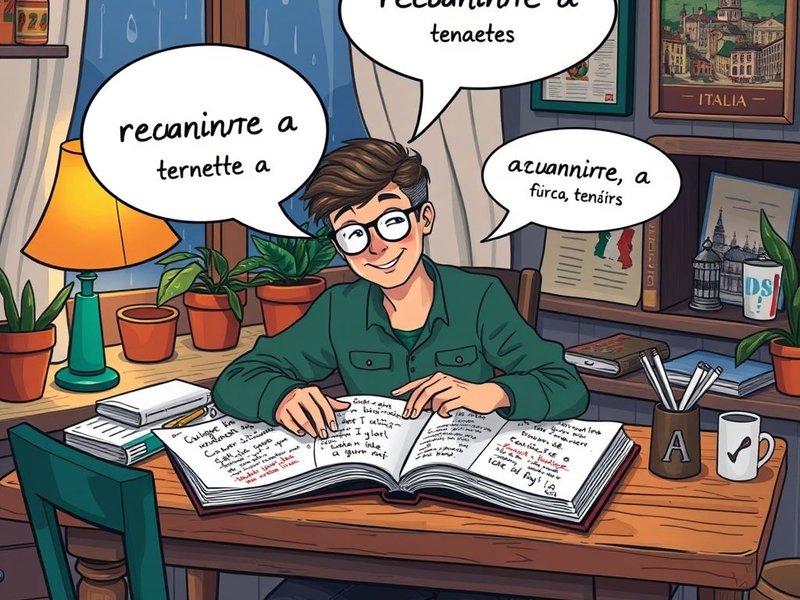How to Use "Continuare a": Meaning and Practical Examples
Learning Italian also means mastering those expressions that make speech sound natural and authentic. One of these is the phrasal verb continuare a, which often causes confusion among A2-B2 level Italian language learners. Have you ever wanted to say that something "keeps happening" but weren’t quite sure how to express it? In this comprehensive guide, we’ll help you understand the meaning, grammatical structure, and provide practical examples so you can use "continuare a" correctly in any situation. You’ll also discover how to avoid the most common mistakes and enrich your practical Italian vocabulary.

Table of Contents
- What does "Continuare a" mean?
- The Grammatical Structure: How is it Used?
- Sentences and Examples with "Continuare a"
- Crucial Differences: Common Mistakes to Avoid
- Similar or Related Expressions
- Conclusion
More: How to Use Assistere a for Meaning, Structure, and Examples
What does "Continuare a" mean?
- Literal Meaning: To carry on with an action or a state without interruption.
- Example: "Ha continuato a piovere per tutta la notte."
- Figurative Meaning: To persist in a behavior, habit, or problem, often with a sense of repetition or annoyance.
- Example: "Nonostante gli avvertimenti, lui ha continuato a sbagliare."
More: How to Use Associare a Meaning and Practical Examples
The Grammatical Structure: How is it Used?
The structure of continuare a is quite simple and direct, making it a useful Italian phrasal verb for many situations. It is formed with the verb "continuare" followed by the preposition "a" and then a verb in the infinitive. This is fundamental for expressing the idea of an ongoing action.
[Subject] + continuare + a + [Verb in the Infinitive]
The preposition "a" is required and indicates the direction or goal of the action of "continuare". The verb "continuare" is conjugated normally, according to the subject and the desired tense (present, passato prossimo, imperfetto, etc.). For example, you can say "io continuo a studiare", "lui ha continuato a lavorare" or "voi continuerete a migliorarvi".
More: How to Use Arrivare a Meaning and Practical Examples
Sentences and Examples with "Continuare a"
Here are some examples of how "continuare a" is used in natural speech in different situations:
📍 Context (Family)
Mamma: "Ancora non hai finito i compiti? È da un'ora che giochi!"
Figlio: "Sì, lo so, ma continuo a non capire l'esercizio di matematica."
📍 Context (Work)
Collega A: "Il progetto è quasi finito, ma c'è un problema con la presentazione."
Collega B: "Davvero? Pensavo fosse tutto a posto. Continuerò a lavorare su quella parte stasera."
📍 Context (Social Media)
Amica A: "Hai visto le ultime notizie? Non ci credo!"
Amica B: "Sì, purtroppo le brutte notizie continuano a girare online."
📍 Context (Everyday Life)
Persona A: "Questo mal di testa non mi passa."
Persona B: "Mi dispiace. Se continua a farti male, forse è meglio che tu vada dal medico."
Crucial Differences: Common Mistakes to Avoid
The main mistake when using continuare a is omitting the preposition "a" or using the wrong preposition. Many tend to translate literally from English or other languages, but in Italian "continuare" specifically requires "a" before a verb in the infinitive. Another point of confusion can be the subtle difference with a verb like "proseguire".
Continuare a + Infinitive Vs. Continuare (without preposition) + Noun
- Correct: Lui ha continuato a leggere. (The action of reading continues)
- Correct: Lui ha continuato la lettura. (He carried on with the act of reading, but in this case "lettura" is a noun, not an infinitive verb. The verb "continuare" here is transitive and takes a direct object.)
Continuare a Vs. Proseguire
- Continuare a: Emphasizes the persistence of an action. It's often used when the action is repetitive or lasting.
- Example: "Nonostante le critiche, hanno continuato a sostenere la loro idea." (Persistence in the action of supporting)
- Proseguire: Implies an idea of advancing, moving forward in a path or process. It can also be used with a direct object or without a preposition if followed by an indication of place or time.
- Example: "Abbiamo finito la prima fase, ora proseguiamo con la seconda." (Advancement in the process)
- Continuare a: Emphasizes the persistence of an action. It's often used when the action is repetitive or lasting.
The use of "continuare a" is specific for indicating that the action of the infinitive verb persists. You don’t use "continuare di" or "continuare con" when following with an infinitive verb to indicate the continuation of the action. As with other verbs, for example, the verb "iniziare" can be followed by "a" or "di", while "continuare" is only with "a" for an ongoing action. You can consult the definition of "continuare" on the Treccani Dictionary.
Similar or Related Expressions
| Similar Expression | Brief Meaning | Example |
|---|---|---|
Andare avanti | To proceed, not stop | "Nonostante le difficoltà, dobbiamo andare avanti." |
Insistere nel | To persist with determination | "Lei ha insistito nel dire la verità." |
Perseverare nel | To go on with tenacity | "Per raggiungere il successo, bisogna perseverare nel proprio obiettivo." |
Seguitare a | (more formal/literary) To continue | "Dopo la pioggia, ha seguitato a tirare vento." |
Conclusion
"Continuare a" is a fundamental expression for anyone who wants to speak more fluent and natural Italian, indicating the continuation of an action or a state. Always keep in mind the structure: continuare + a + infinitive to express that something persists over time. Now that you have a clear understanding of "continuare a", try using it in your daily conversations. In which context would you use "continuare a"? Share your sentence in the comments!